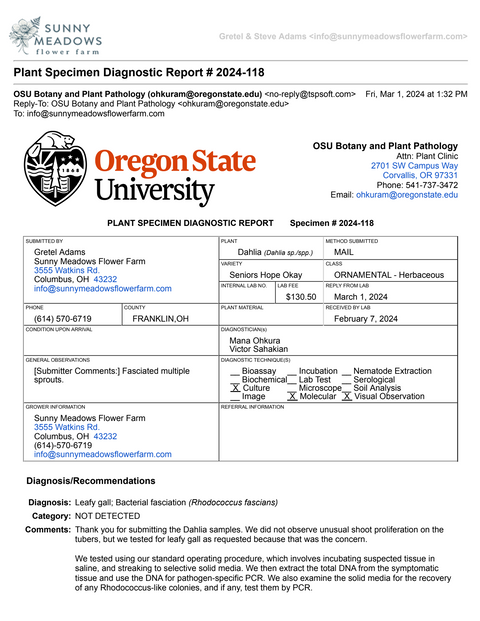Dahlia Tuber FAQ
Share your best answersDahlia Tuber Disease
If you suspect your dahlia tuber is diseased, we recommend having them tested to confirm your diagnosis before disposing of your tuber stock.
Oregon State University is the only lab in the United States that tests for leafy gall, while other university labs can test for crown gall pathogens. Leafy gall is known as Rhodococcus fascians, and crown gall is also known as Agrobacterium.
Keep in mind...
- We do not diagnose disease based on visual symptoms alone. Because we are growing commercially, we regularly test our soil, water, and plant material for disease and monitor for insect damage. Symptoms of disease can mimic signs of other problems, and oftentimes there's a lot you can do to remediate a situation before throwing away your entire plant stock.
-
Tubers with multiple shoots can still test negative for gall. For bacteria to be cultured, there must be visible signs of the disease present, however, multiple shoots are not necessarily an indicator of gall and the tuber may still be negative.
-
When we are digging tubers from the field, we dispose of any tubers that are showing signs of disease to avoid storing them with our stock over the winter.
-
Although there is a growing awareness about tuber disease in the industry, information about the effects on plant habit is still being determined.
- The first rule of growing is: There are no guarantees. Dahlia tubers are a living organism and like all living things, some may not make it, for any number of reasons.
Tuber Disease Protocol
If you believe there is an issue with your tuber or plant please use the link below to fill out a dahlia tuber support ticket.





